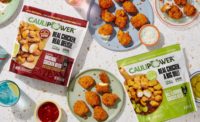Whether they’re struggling to lose weight, dealing with a diabetes diagnosis, or thinking about some other health concern, U.S. consumers are more than ever before looking to lower the level of sugar in their diet. However, the collective taste for sweet snacks and baked treats isn’t going away anytime soon. To gain perspective on the topic, Snack Food & Wholesale Bakery connected with Sarah Diedrich, marketing director for global sweetening and texturizing with ADM.
Jenni Spinner: Could you please talk about the evolution in consumers’ desires and behaviors around sugar reduction in their diets?
Sarah Diedrich: Consumers are taking a more proactive approach to their health and well-being and are increasingly reviewing the ingredients listed on product labels. The majority of consumers are mindful of their calorie and sugar intake, with eight in 10 US and EU consumers claiming they take action to limit sugars in their daily diets. At the same time, some consumers may avoid sugar because they believe it’s too sweet or that sugar in foods may indicate a product they’re purchasing lacks other nutrients.
While sugar and calorie reduction are key drivers to attracting wellness-minded consumers, the same consumers are also not willing to sacrifice an enjoyable sensory experience. In fact, having less sugar and an appealing taste are ranked as equally important in the decision process when considering new food and beverage purchases. In addition to their physical health, consumers are also focusing more on their emotional well-being as an important part in supporting their holistic wellness, with many seeing enjoyment of foods as a vital aspect. Research shows that 65% of global consumers say it’s okay to enjoy treats as part of a healthy diet, opening the door for bakers to create delicious treats with reduced sugar to satisfy consumer demands to purposefully indulge without adding unwanted sugar content or calories into their diet.
JS: How have snack, bakery, and confectionery producers responded?
SD: Increasing demands around sugar reduction have prompted responses from bakery and snack brands alike. Consumers are gravitating towards “better-for-you” food and beverage products in an effort to support their overall holistic well-being. In fact, sugar reduction becomes 56% more important for shoppers searching for functional foods and beverages. Shoppers are making deliberate choices about how they eat and live to support energy levels, long-term health and balanced mood.
The sugar reduction trend is challenging bakers to think outside the box to create reduced-sugar baked goods and snacks that explore a world of flavors and textures, while also offering functional attributes. Bakery and snack brands are now creating offerings with functional ingredients and attributes that more closely align with consumers wellness goals, while still maintaining the indulgence factor. From plant proteins to wholesome ingredients, botanicals, fiber and more, bakers have a wealth of ingredients to pull from that can support these formulation targets.
When leveraging alternative sweeteners to create reduced-sugar formulations, it’s important for brands to consider the broader consumer appeal. Consumers are increasingly gravitating towards sweeteners they consider to be “closer-to-nature” from simple, recognizable sources. In fact, our research shows that consumers consider naturally sourced sweeteners to be “better” overall, for their personal well-being and the environment, in addition to having a preferred taste profile, and free from artificial ingredients. The use of stevia or agave tick these boxes as both are a familiar and premium ingredient on product labels.
Further, certain sweetening sources like agave can provide an organic option and may have a health halo for some consumers. They’re used most often in indulgent-forward categories, helping reach clean label targets and meet consumer demands.
Reduced-sugar options are now available throughout a multitude of categories, including baked goods and snacks, and it’s changing the way consumers indulge in their favorite treats. Consumers are seeking increased individualized support, looking for tailored offerings that are enjoyable, while also customized to meet their unique wellness needs and clean label demands.
JS: What are some of the challenges producers looking to reduce sugar in their products have faced?
SD: Many consumers view sugar primarily as a flavor enhancer in many products. However, sugar and sweeteners also play a critical role in providing essential functions in finished baked goods, sweets and snacks, including structure, binding and browning, all of which contribute to the overall texture and mouthfeel.
It’s essential for bakers and manufacturers to consider all aspects of the formulation process, as well as the goals they’re trying to achieve with the end product when reducing sugar. This can be achieved by adopting an incremental approach while adjusting baked good or snack formulations to help ensure targets are met across different reduced-sugar applications.
Sugar reduction strategies are highly dependent on the type of baked good being made and the preferred sweetener system. For savory bakery formulations, like breads, only a slight adjustment to the yeast may be needed to achieve sugar reduction. Alternatively, cakes, muffins, cookies, brownies, and bars could use a simple one-to-one swap of ingredients to yield desired results.
Furthermore, switching from traditional granulated sugar to liquid sugar systems may require minor adjustments involving water content and the preferred sweetness level. However, greater formulation modifications might be necessary when moving from a conventional sweetener to a lower sugar option.
JS: How can companies like ADM help food companies juggle all of these needs and challenges?
SD: Our extensive portfolio of low- and no-calorie sweeteners help reduce sugar content and calories, while also maintaining the desired taste and texture in baked goods and snacks. We understand that each application is unique, with specific formulation requirements, as well as clean label and cost targets.
Markedly, we take a holistic approach to sugar reduction that not only helps reduce sugar, but also replace sweetness, rebalance flavor and rebuild functionality. Striking the perfect balance between reducing sugar and delivering a consumer-preferred sensory experience takes the right formulation experience coupled with quality sweetening solutions. By tapping the right sweeteners, or combination of sweeteners, brands can ensure they’re building consumer-preferred products while also reducing sugar content.
For example, our SweetRight agave addresses consumers’ calls for sugar reduction and fulfills demand for sweetness derived from natural sources. SweetRight agave has a sweetening potency 25-30% higher than sucrose, and with less input required to achieve the same sweetness level, our agave can support highly sought-after sugar and calorie reduction targets. Plus, our agave has a neutral sensory profile, binding and browning properties, and superb solubility, moisture retention and humectancy, enabling ease of use for bakers. It also is certified organic, kosher, halal, non-GMO and fair trade, as well as responsibly and transparently sourced, helping capture discerning shoppers’ attentions.
Additionally, our SweetRight Stevia Edge-M offers improved sweetening, reduced bitterness and increased solubility compared to Rebaudioside (Reb) M. SweetRight Stevia Edge-M is isolated directly from the stevia leaf, which means it’s unique from other Reb M options on the market, as it's not produced by fermentation or bioconversion. As a result, it can be listed as “stevia leaf extract” on product labels, helping meet consumers’ clean label desires. Plus, when compared to Reb M and Reb D, our SweetRight Stevia Edge-M has the added benefit of cost savings.
Our SweetRight Reduced Sugar Glucose Syrup (RSGS) is also an excellent solution for the bakery space, allowing for more formulation flexibility in applications like protein bars and snacks. When used in reduced-sugar formulations, RSGS can replace corn syrup without sacrificing functionality, as it provides binding and viscosity comparable to this traditional sweetener. It can also achieve up to 30% sugar reduction. Plus, when combine with other sweeteners like our SweetRight Stevia Edge-M, bakers and snack makers can extend the solutions further and achieve even greater sugar-reduction targets while also delivering on taste and functionality.
Furthermore, complementary ingredients are also useful in reduced sugar offerings, particularly those that have multiple positive attributes. Specifically, ADM/Matsutani LLC’s Fibersol, an innovative soluble dietary fiber, meets consumers’ desire for added fiber, while also acting as a complementary ingredient when reducing sugar, without affecting key sensory aspects. In fact, Fibersol builds back integrity through structural and binding qualities that can be lost when sugar is reduced or removed completely. Plus, Fibersol also comes in liquid versions to make swapping for syrups easier in fiber-forward low-sugar cookies, bars and snacks that also taste delectable.
JS: What advice do you have for producers who are interested in exploring glycemic reduction in their existing products and launching new items?
SD: Our research indicates that 84% of consumers claim they are avoiding or decreasing consumption of sugar to manage blood glucose levels. Of these consumers, 37% are more actively seeking out sugar alternatives that can help them meet their goals. We see an opportunity to increase consumer awareness and create educational content that communicates the potential of sugar alternatives to positively support consumers’ goals.
To make informed decisions about nutrition and the meals, products and ingredients most appropriate to support healthy blood glucose control, it’s important to understand the key differences between glycemic index (GI), glycemic load (GL) and glycemic response (GR). Studies show links between long-term consumption of high glycemic index foods and increased risk for non-communicable diseases, including type 2 diabetes and cardiovascular diseases.
At the same time, reducing the diet’s glycemic load may support with glycemic control or limit severe increases in circulating blood glucose. Lowering the GL can be achieved by increasing consumption of whole grains, legumes, nuts, seeds, non-starchy vegetables, as well as non-nutritive or low glycemic sweeteners.
Despite increasing awareness of sugar alternatives to support blood sugar control, not all sugars and sweeteners are universally recognized or understood. There are many options on the market that can replace sweetness to lower calories and sugars in foods and beverages, but consumer awareness of these varies. For instance, the GI of a sugar or sweetener can dictate blood glucose levels after consumption. Sugar alternatives such as high-potency sweeteners are low glycemic sweeteners that can minimize impact on blood glucose levels. Alternatively, sweeteners with higher glucose in their composition have a higher GI value and are less supportive in managing blood sugar.
With so many options currently on the market, we recommend thinking of sweetener and sugar alternatives in four categories:
- Foundational: This includes traditional sugars and bulk sweeteners with varying glycemic index values depending on their makeup of glucose, fructose and sucrose, and are generally best in moderation for consumers focused on regulating blood sugar.
- Food-associated: Nutritive sweeteners like honey, agave, or molasses have wide variability in glycemic measurements. Some food-associated sweeteners like fruit syrup and agave have a lower glycemic index, which supports more stable blood glucose.
- Branded: Brands of sweeteners consumers will recognize are high-potency sweeteners like stevia and sucralose, both of which are familiar and sought after for being effective in managing blood sugar.
- Unfamiliar: There are a variety of lesser-known sweetening ingredients due to the rapid innovation surrounding sugar reduction that are used in the foods and beverages we enjoy. This may include novel plant-based ingredients like monk fruit or allulose to support blood glucose, while achieving sweetness with reductions to calories and carbohydrates.





